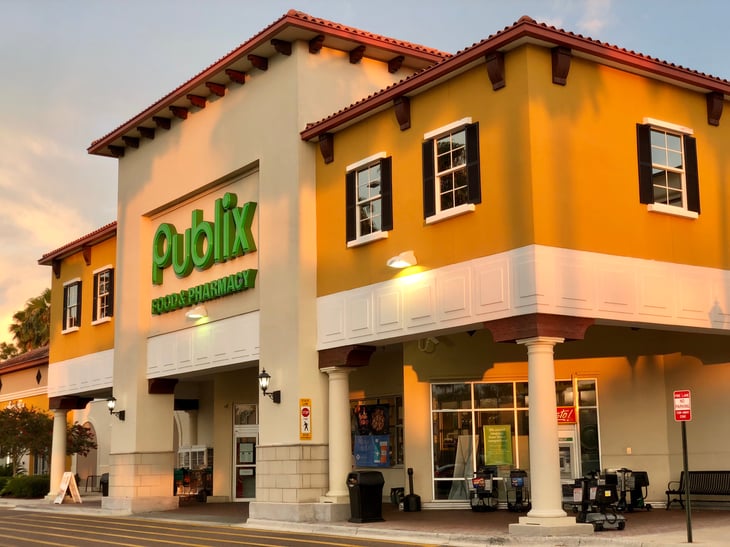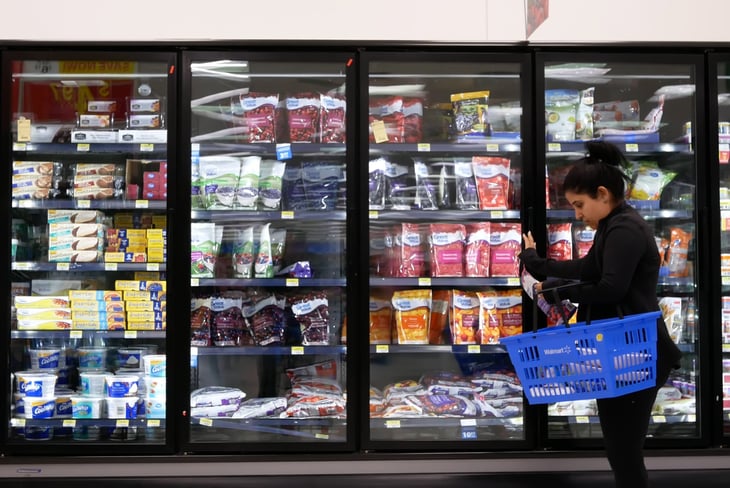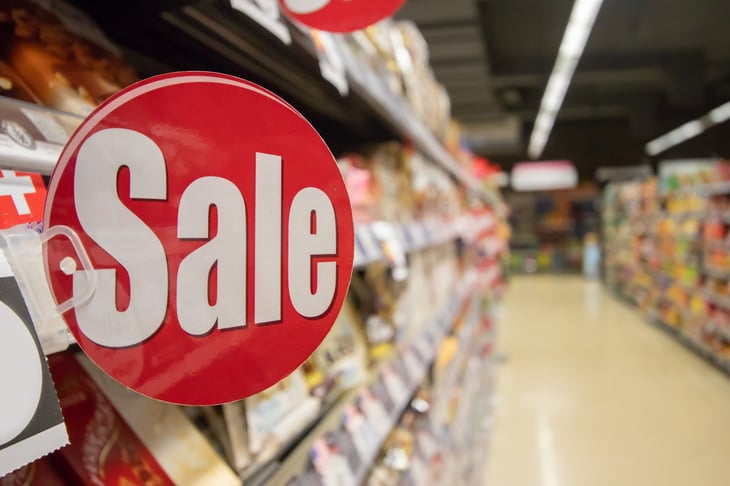
Editor's Note: This story originally appeared on The Penny Hoarder.
What’s in a name? A lot actually.
We often default to certain brands when shopping simply because of the name on the package — and the reputation that comes along with it, thanks to clever advertising.
We buy Bounty paper towels because they’re the “quicker picker-upper” and Frosted Flakes because “they’re gr-r-reat.”
But on the shelves next to those items you can often find a comparable store-brand version that costs less — sometimes significantly less. We often refer to these as generic products. Sometimes these rival versions are even made in the same manufacturing facilities and have little to no noticeable differences.
Ultimately, the decision to buy a store-brand product or your favorite name brand is a subjective one. There’s trial and error involved, and in some cases you might land right back on the premium paper towels because you find that they really do pick more up, and quicker.
But before your next shopping trip, it’s worth considering how much money you could save if you take a few name brand items off your list.
Comparing the Cost of Store Brand vs. Name Brand

We visited two stores — Publix (a southeastern grocery store chain) and Walmart — to do a little price comparison. Walmart’s store brand is Great Value.
(Note: Prices were sourced on March 16, 2023, and Sept. 28, 2023, at stores located in St. Petersburg, Florida, and Durango, Colorado, respectively. Sales tax was not factored into this example.)
Publix Store Brand vs. Name Brand

- Chocolate sandwich cookies: $3.79 vs. $5.79 (Oreos)
- Peanut Butter: $2.99 vs. $3.06 (Jif)
- Cereal: $2.87 vs. $4.98 (Honey Nut Cheerios)
- Cheddar cheese: $3.99 vs. $4.69 (Cabot)
- Diet cola, 12 pack: $4.33 vs. $8.59 (Diet Coke)
- Body wash: $5.97 vs. $5.97 (Ivory)
- Adult pain relief pills: $2.89 vs. $5.39 (Aleve 24 caplets)
- Children’s pain relief: $4.99 vs. $9.11 (Tylenol)
- Publix store brand total: $31.82 vs. name brand total: $47.58
A shopper at Publix would save $15.76 or about 33% by buying the store-brand version of these eight items over the name-brand alternatives.
Walmart Store Brand vs. Name Brand

- Chocolate sandwich cookies: $2.38 vs. $4.58 (Oreos)
- Peanut Butter: $2.18 vs. $3.12 (Jif)
- Cereal: $2.97 vs. $4.93 (Honey Nut Cheerios)
- Cheddar cheese: $2.00 vs. $2.77 (Cabot)
- Diet cola, 12 pack: $4.46 vs. $7.36 (Diet Coke)
- Body wash: $5.97 vs. $5.98 (Ivory)
- Adult pain relief pills: $8.97 (220 mg, 80 caplets) vs. $11.67* (Aleve 220 mg, 90 caplets)
- Children’s pain relief: $3.27 (4 ounces) vs. $6.57 (Tylenol, 4 ounces)
- Walmart brand total: $32.21 vs. name brand total: $46.97
*Slightly larger
A shopper at Walmart would save $14.76 or slightly more than 30%.
Savings Can Add Up

Consider that only eight items were used in this example. When’s the last time you went to the grocery store and walked away with just eight things?
The greater the grocery haul, the greater the savings by choosing the cheaper alternative.
And since you likely go shopping more than once a month, you could see a significant difference in your monthly budget by swapping out name-brand items.
Store Brand vs. Name Brand: How To Decide

Since store-brand merchandise costs less money than name-brand counterparts, a common perception is that they’re of lesser quality. But that’s not always true.
One reason name-brand items are more expensive is because it costs money to market those products to the public. Consumers pay the price for those commercial jingles that stick in their heads.
Most store-brand products are made to closely compare to their name-brand products. If you check the ingredients, sometimes you’ll find they’re made of the exact same stuff — though the recipes may differ slightly. What the decision really comes down to is preference.
We asked The Penny Hoarder community members about buying store-brand items over name brand.
Respondents said they often choose store-brand products to save money but still have name-brand preferences when it comes to certain items, despite any cost savings.
Tips From the Community

“I will use generic for anything but my hair products,” said community member “KellyFromKeene.”
“Otherwise, (with) food, clothes (and) household supplies, I will get the generic if the ingredients are the same.”
Community member Jobelle Collie said she’s partial to Dove bar soap, Olay moisturizer and Palmolive green dishwashing liquid but buys generic trash bags, office supplies and kitchen staples like salt, pepper and sugar.
Store Brand Trial and Error

Sometimes going with the store brand is a matter of trial and error.
“I definitely try to choose store brand, at least initially. Sometimes, I can tell the difference,” said community member “Sthom.” “For example, I tried my store’s brand of filters for my Brita: I could tell the difference immediately, so I switched back. That happens sometimes.”
Sthom said she’s partial to Jif smooth peanut butter but was sold when she tried her store’s own organic smooth peanut butter, which was less than $2. She described it as “good, if not better.”
On the other hand, Publix had specials on name-brand items that made them more affordable. For example, Oreos and Cheerios were on sale for two for $8.00.
BOGO offers are a staple for Publix shoppers. Diet Coke was on sale for buy two and get one free. Store brands may be on sale less often. Though the Publix brand cheddar cheese was on sale for $2.79.
Store brand canned goods are often an excellent deal. Walmart’s Great Value black beans are 78 cents online compared to $1.28 for Bush’s black beans. Great Value boxed chicken broth is $1.37, and the Swanson product is $2.52, nearly double the price.
Tips for Weighing Store-Brand vs. Name-Brand Products

When deciding between store brand and name brand, keep these things in mind.
1. Do a taste test

Try swapping out the name-brand version of single-ingredient items — like flour, rice, milk and eggs — for the store-brand version.
You may find there’s less variation in taste or quality than multi-ingredient items like cookies or soup.
2. Doctor store brands

Use spices or other ingredients you have at home to dress up a store-brand product — for example, adding basil and garlic to a jar of pasta sauce.
3. Know that store brands aren’t created equal

You may dislike the taste of store-brand cereal or the quality of store-brand toilet paper at one grocer, but another store’s products could be more on par with the name brands.
4. Understand medicine regulations

The U.S. Food and Drug Administration requires generic medications (over-the-counter and prescription) to have the same active ingredient, strength and dosage form as the name-brand equivalent.
Both products should be medically equal.
5. Watch sales and use coupons

Store sales and coupons can cause name-brand products to cost less than the store version. Store brands aren’t always the cheapest option.
This is a great time to indulge in your preferred brand and save money.
6. Do the math

Check to see if there really is a savings with the store brand. For example, a 22-ounce Dove Body Wash costs $8.15 at Publix, and the store brand is $7.99, but it is 18 ounces.
There’s a huge difference at Walmart between the store and name brands with Tylenol — 200 capsules of the store brand costs $3.94, and name brand costs $19.97 for 225.
7. Study prices on shelves

Most stores post the price per unit on the pricing tag on store shelves. That makes comparing prices easier.
8. Look online

There are websites devoted to coupons and specific stores’ sales.
9. Delivery and even store pick-up services can be significantly more expensive

For example, an 8-ounce block of Cabot Cheese was 4.69 in the store, but $5.19 through Instacart, which is 9% more expensive.





Add a Comment
Our Policy: We welcome relevant and respectful comments in order to foster healthy and informative discussions. All other comments may be removed. Comments with links are automatically held for moderation.